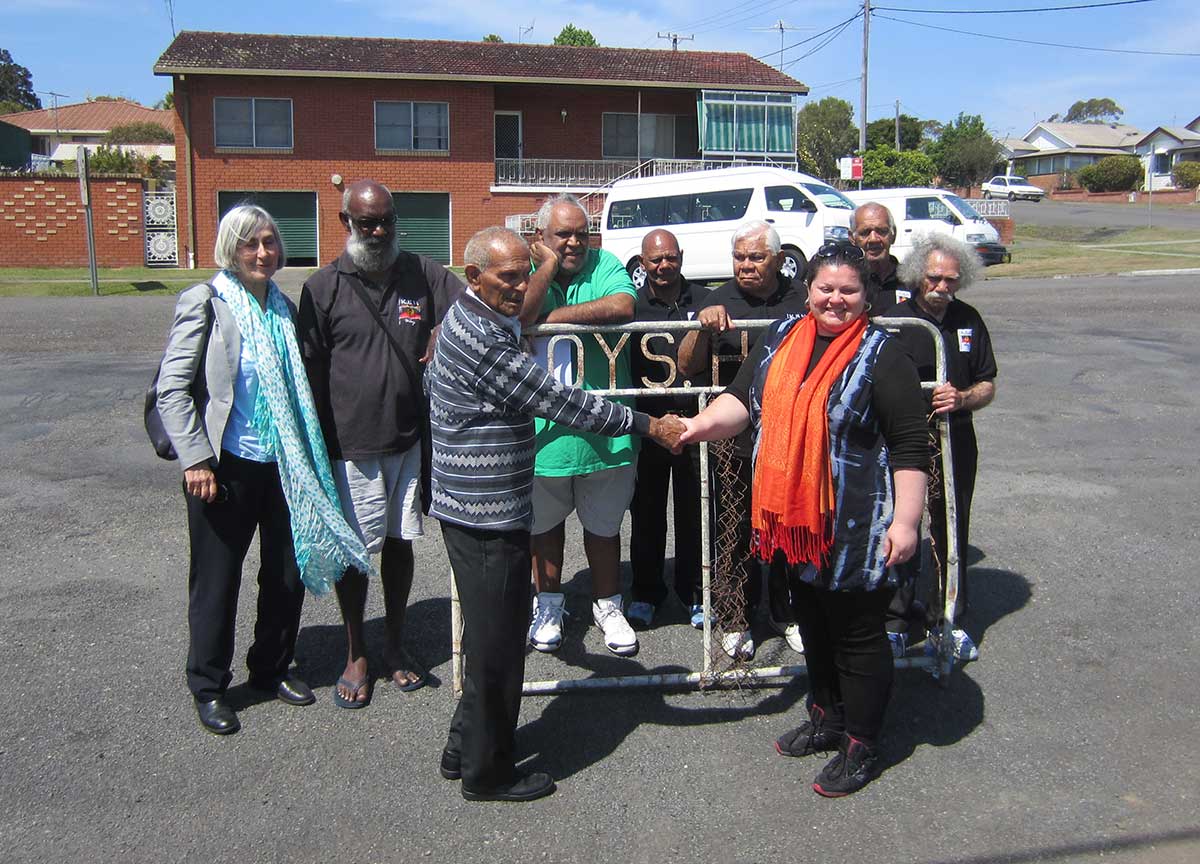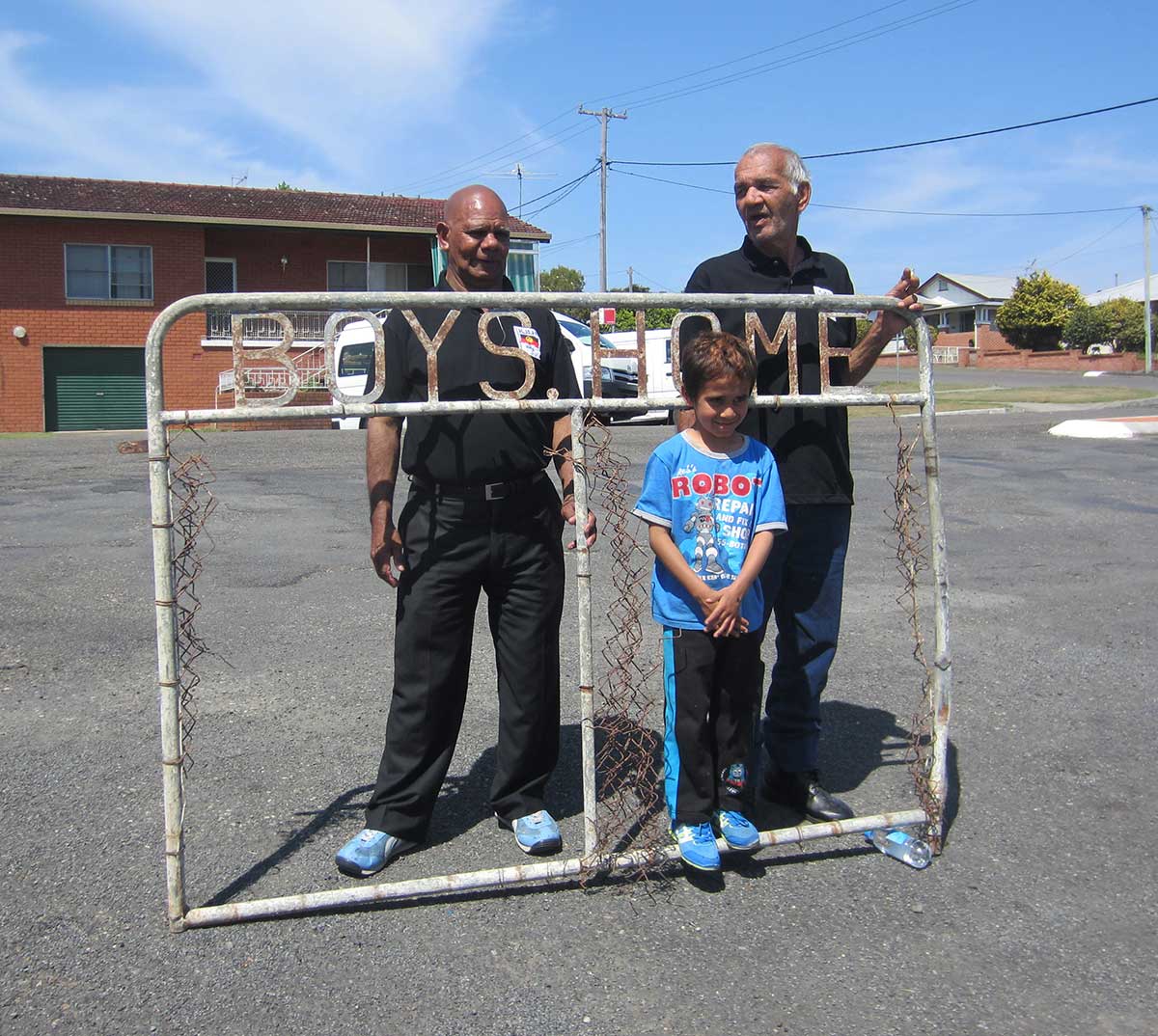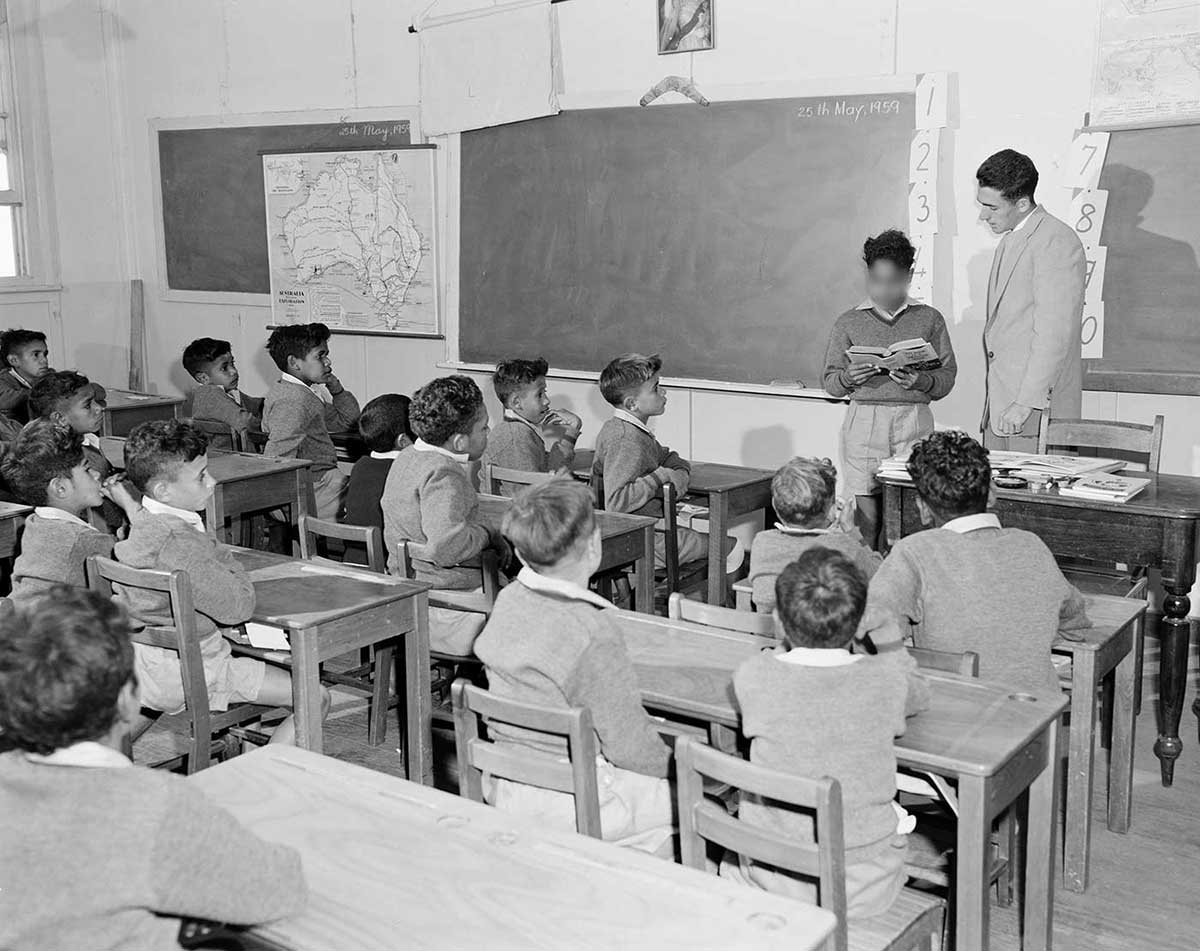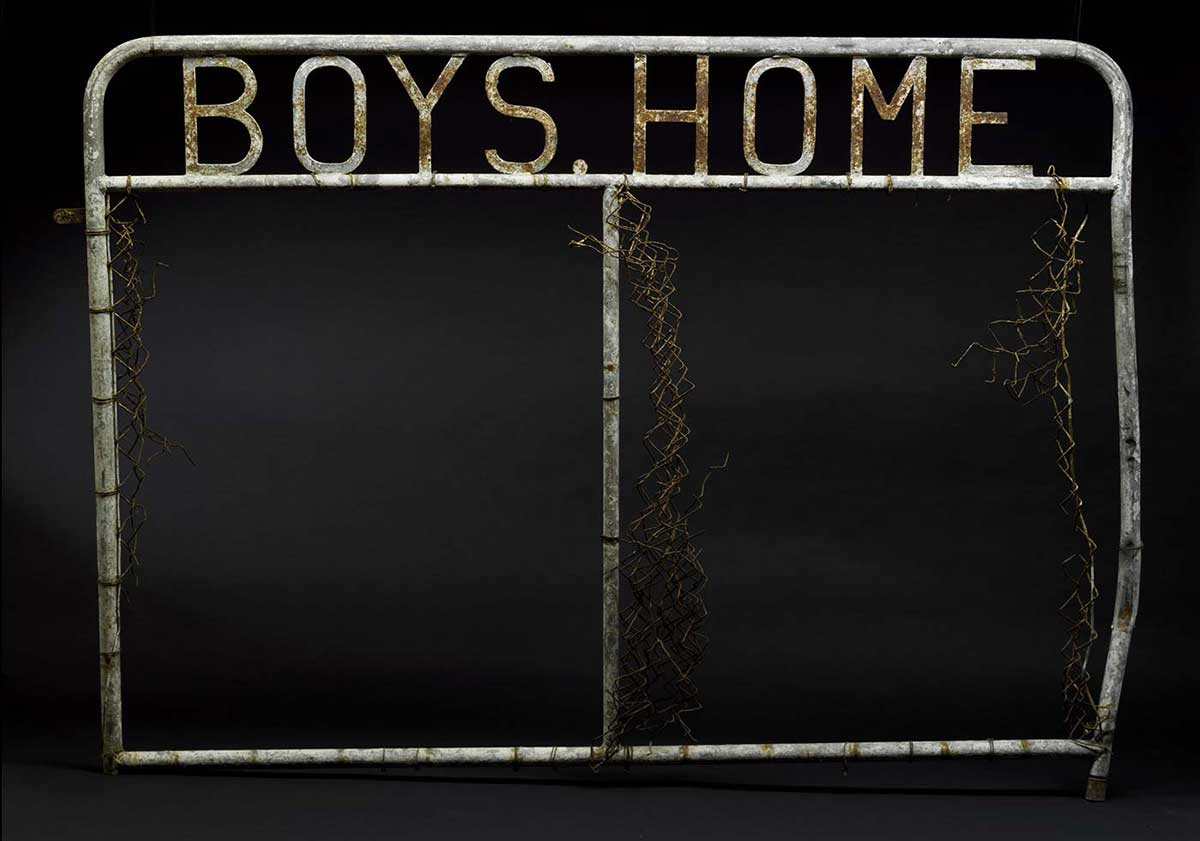A gate symbolic of the systematic removal of Indigenous children from their families is part of the National Museum of Australia's collection.
The remaining half of the old Kinchela Boys Home gate represents one of the most well-known Aboriginal children's homes in New South Wales, at Kempsey on the north coast. 'This is what kept us in, kept us from our culture. Going through that gate, it was going into hell,' said former resident Manuel Ebsworth.
Retrieved from the riverside

This gate was one of a pair that originally formed the front gates of Kinchela Aboriginal Boys Training Home when it was established by the Aboriginal Protection Board in 1924.
The gates were discarded and replaced about 1950. In the late 1990s a community member found this gate by the Macleay River in Kempsey and passed it on to Dunghutti Elder, Uncle Harold 'Bluey' Smith, for custodianship.
In 2012 in a suburban street in Kempsey a small crowd of friends and brothers gathered to see the gate and officially hand it over to the National Museum.
Museum handover part of the healing
The handover was a moment of high emotions as Kinchela 'boys', now senior men, saw for the first time in more than 48 years, the gate they walked through as children.
As part of the Museum's collection the gate will represent the stories of the Kinchela boys' experiences, as individuals and a group. 'This is a part of the healing – knowing their stories are believed and knowing this history will be remembered,' said Pastor Ray Minnecon.
The Kinchela men at the handover were keen to ensure their story was known and heard. 'If this old gate could talk, you'd hear some horror stories,' said Ian 'Crow' Lowe, another former Kinchela resident.
The donation to the National Museum means the gate will be stored safely and accessible for those with connections to Kinchela. 'For us this is an old story, a hard story, but it's our story,' said Uncle Cecil Bowden. 'Our lives were impacted negatively by being there [at Kinchela] and those experiences there, it negatively affected our life and how we live our life'.

Stolen Generations
One of the most powerful stories of the 20th century for Aboriginal and Torres Strait Islander peoples is the state-sanctioned removal of their children.
The children who were in Kinchela are acknowledged as part of the Stolen Generations.
'We were only little when we went there [Kinchela],' William Lesley said. 'We were taken from our family, but we became family for each other. We're brothers, we stick together'.

Kinchela's changing history
More than 400 boys were held at Kinchela until it closed in 1970. During its operation, Kinchela and its residents were the subject of positive national and local news stories about the resident's lives and experiences.
The reality, however, was quite different. Several reports from private researchers and government officials describe the brutal treatment and teaching practices and terrible living situation of residents over five decades.
The men at the handover of the gate were part of the human face of that history.
Uncle Bluey Smith, who was the gate's custodian for more than 13 years did not attend Kinchela but knew many 'boys' who had, and he recognised the cultural importance of the gate.
He was happy to hear that the Kinchela Boys Home Aboriginal Corporation had decided to donate it to the National Museum, and was part of the handover ceremony.
'It was easy to see what was going on in there to those boys,' he said. 'It was hard not knowing what we, as a community [in Kempsey], could do about it. I hope this story helps people become educated enough to know why we don't do this to children. Children become adults.'
Stolen Generations and children's homes
The Kinchela gate joins the Museum's growing collection of objects linked to the Stolen Generations and children's homes and institutions. The passing of time and the nature of growing up in an institution means that the survival of objects is relatively rare.
The Kinchela gate is on show in the Museum's First Australians gallery. Some of these objects featured in the Museum's exhibition, Inside: Life in Children's Homes and Institutions.
In our collection
